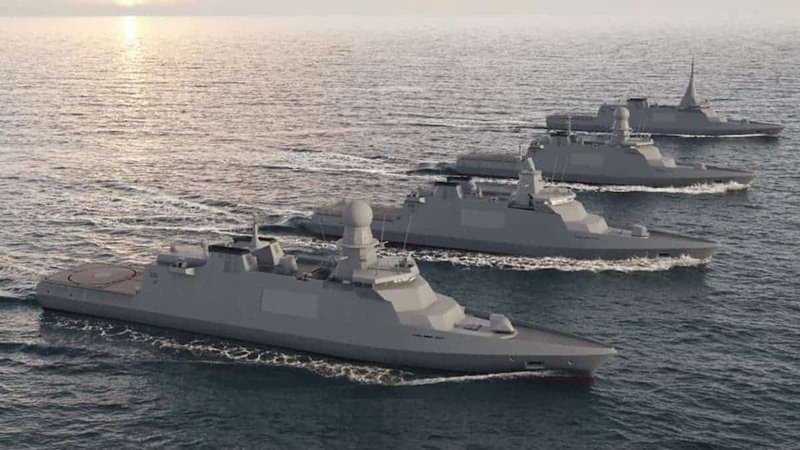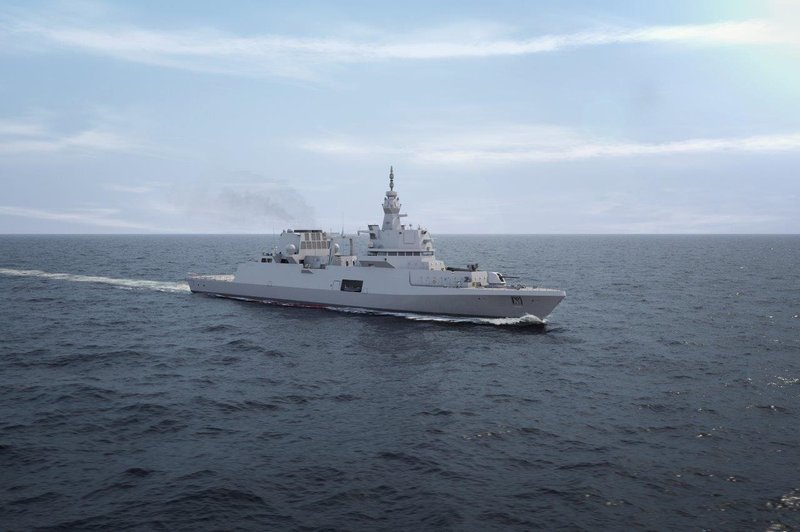Industrial action – will the EU’s new defence strategy succeed where others have failed?
In early March, the European Commission (EC) released a new formal strategy with the aim of developing a responsive and resilient European defence industry. Will this latest approach fare better than many existing initiatives it is ‘supporting’, and what will this mean for the naval sector?
On 5 March, the EC announced a new building block for European defence, the logically if unimaginatively named European Defence Industrial Strategy (EDIS) to ‘achieve EU readiness through a responsive and resilient European Defence Industry’... Continues below
Newsletter Sponsors:

Above: The multinational European Patrol Corvette could be a poster child for EU defence industrial cooperation if the programme proceeds as intended. (Image: Naviris)
Without going into too much detail, the main objective is to achieve this responsiveness and resilience by: investing more, better, together and ‘European’; a more efficient and responsive defence technological and industrial base relying on enhanced security of supply; developing the financial means to achieve this; mainstreaming a defence readiness culture; and developing partnerships.
The agenda, to say the least, is ambitious.
It is also widely reminiscent, to varying degrees, of the several other EU tools already seeking to achieve defence cooperation and investment. Take your pick of acronyms from CDP, CARD, PESCO and the EDF, all coordinated by the European Defence Agency. And let’s not forget the Strategic Compass.
One thing the EU cannot be accused of, as regards fostering a consolidated European defence sector, is a lack of trying! Yet the statistics are damning and continue to speak for themselves.

Schiebel – leading the unmanned evolution
According to the report launching EDIS: ‘Between 2021 and 2022, there has been a 7% increase in the procurement of new equipment, but only 18% of the total equipment spending was devoted to EU collaborative defence equipment procurement in 2022, far below the current 35% collective benchmark set by member states.’
Perhaps even more worrying is the fact that 78% of member states’ defence acquisitions between February 2022 and June 2023 were made from outside the EU. Of those, 63% came from the US.
Some examples from the naval aviation domain may help shed light on the mechanics at work behind the discrepancy between European political will and national realities.
In July 2017, France and Germany announced that they would work together toward a Maritime Airborne Warfare System (MAWS). The objective was for the two countries to collaborate on development of a system replacing German P-3C Orions and French Atlantique 2 maritime patrol aircraft (MPAs).
In June 2021, however, Berlin stepped outside the MAWS lines to acquire five very non-European Boeing P-8 Poseidon MPAs. The move, at the time, was justified as an interim solution by German authorities, while waiting for the MAWS programme to make progress.
With Berlin’s announcement in March this year that it would acquire a further three P-8s, the initial justification is looking less and less plausible.
A similar pattern emerged for the Future Combat Air System (FCAS), which sought to replace the French Rafale fleet and German and Spanish Eurofighters.
One obvious point of divergence from the beginning was that only France needed a navalised jet to equip its future aircraft carrier, which would inevitably result in design compromises.

Announced in 2017, the programme took a further turn in 2022 when Germany announced it would purchase F-35s to replace at least part of its fast jet fleet. Again, this was meant to be an interim solution, but marked the beginning of a long series of disagreements between Germany, France and Spain (which joined the programme in December 2020).
All parties have been trying to iron out their differences, but today reports continue questioning whether Germany will leave FCAS to join the rival Global Combat Air Programme with the UK, Japan and Italy.
Under Chancellor Angela Merkel, it was difficult to find two countries more committed to European defence than France and Germany. It might not have been easy to cooperate – after all, security is a very national subject – but both were broadly strongly aligned.

Above: Germany’s preference for the US AEGIS missile system for the F127 future frigate was a major factor in abandoning development and procurement of a common design with the Netherlands. (Image: TKMS)
This started slowly changing with Olaf Scholtz becoming Germany’s chancellor and demonstrating a strong preference for acquiring US-proven capabilities rather than collaborating with other European partners to develop new ones.
Indeed, the recent abandonment of German-Dutch plans to acquire a common next-generation air defence frigate was largely due to Berlin’s preference for the US AEGIS weapon system. Here at least the ship itself will most likely be a (different) European solution for both countries.
The US, of course, is not innocent in the difficulties the EU is encountering in the strengthening of its defence sector. While official rhetoric is for Europe to gain more independence for its defence – including a stronger industrial base – US companies are still very much seeking to sell their solutions on the old continent. Because, after all, business is business.
Other articles in this newsletter:
Calming the waters: can a code of conduct for the South China Sea defuse regional maritime tensions?
Europe’s naval shipbuilders can of course take comfort in the fact that there are few (if any) off-the-shelf US alternatives to their designs available.
There is no denying that the war in Ukraine has, sadly, become an opportunity knocking at the EU’s door to strengthen defence cooperation and, consequently, resilience and independence.
But for this to become a reality, member states must be able to align their defence priorities – both in terms of security and in terms of industrial development. And defence priorities, as we well know, can change with each election cycle, with many upcoming polls having the potential to disrupt international relations in Europe and beyond.
If countries such as France and Germany cannot seem to agree on key capabilities, or if Italy prefers to partner with the UK and Japan, is difficult to stay positive about the momentum growing for European defence. Opportunity never knocks twice… are we missing the boat? Perhaps the European Patrol Corvette programme will tell…
Don't want to miss out on future Decisive Edge content? Make sure you are signed up to our email newsletters.












